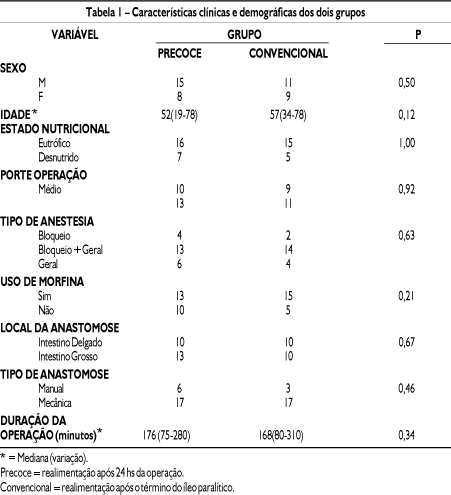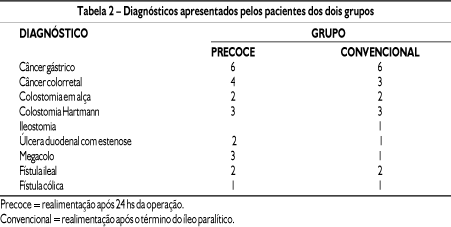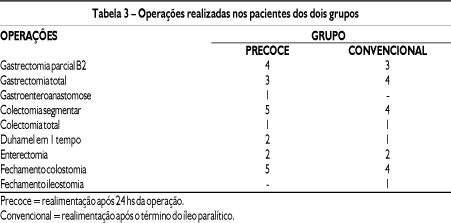BACKGROUND: Oral intake after intestinal anastomoses has traditionally been prescribed only after the resolution of ileus. The aim of this study was to evaluate the immediate results of early oral feeding in postoperative course of intestinal anastomoses. METHODS: 43 consecutive patients submitted to operations associated with intestinal anastomoses were randomized to two groups: early group (N=23) allowed to oral intake after 24 h of operation and conventional group (N=20) in which feeding was allowed only after the ileus resolution. Groups were statistically similar for age, gender, nutritional status, duration of operation, local and type of anastomoses, type of anesthesia and use of morphine. RESULTS: Three (13%) patients of early group and two (10%) of conventional presented vomiting requiring nasogastric decompression (P.0.05). Three (7.3%) patients, two (10%) in early feeding group and one (5%) in conventional group died (P>0.05). There was no difference between the groups for morbidity. Two anastomotic dehiscences occurred in each group. Passage of flatus was reported earlier (P=0.01) in early feeding group (35±13 h) when compared with conventional group (44±12 h). Hospital stay was similar between the two groups (conventional group = 12 [6-36] days versus early feeding group = 10 [5-29] days). CONCLUSIONS: The return of oral feeding on the first postoperative day in patients submitted to intestinal anastomoses is safe, not associated with the occurrence of anastomotic dehiscence and moreover, related to a shorter resolution of ileus.
Nutrition; Colon; Surgery; Intestinal anastomoses





